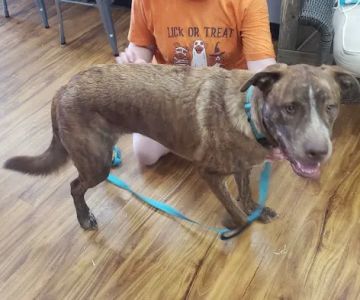How to Stop a Dog from Growling at Strangers
Dealing with a dog that growls at strangers can be a tricky situation for any pet owner. It’s natural to want your dog to be friendly and approachable, but some dogs exhibit fear or territorial behavior that causes them to growl when unfamiliar people are near. Understanding the root cause of the behavior and using the right training techniques can help you manage this issue and foster a calm, well-behaved dog. Below, we’ll explore the reasons behind growling, how to stop it, and effective training methods to improve your dog’s behavior around strangers.

1946 S Christopher Columbus Blvd, Philadelphia, PA 19148, USA
See DetailsUnderstanding Why Dogs Growl at Strangers
Before diving into solutions, it’s important to understand why dogs growl at strangers. Growling is a form of communication for dogs, signaling discomfort, fear, or territoriality. It’s not always an aggressive behavior, but rather a way for dogs to express unease or to set boundaries. Some dogs growl when they feel their space is being invaded, while others may simply be nervous about unfamiliar people or environments.
Signs Your Dog May Be Growling at Strangers
While a growl is the most obvious sign of discomfort, there are other signs to look for when a dog is encountering a stranger:
- Stiff body posture
- Whining or barking
- Backing away or hiding
- Wide eyes or dilated pupils
If your dog exhibits these behaviors in addition to growling, it’s likely feeling threatened or fearful. Identifying these signs early can help prevent escalation and allow for appropriate training.
How to Stop Your Dog from Growling at Strangers
Now that we understand why dogs growl, let’s talk about how to stop this behavior. Here are some effective strategies:
1. Socialization
One of the most effective ways to reduce growling at strangers is through early and ongoing socialization. Exposing your dog to a variety of people, environments, and situations helps them become more comfortable with unfamiliar experiences. Start slow and gradually introduce your dog to strangers in controlled environments. Reward calm behavior with treats and praise.
2. Positive Reinforcement
Positive reinforcement is a powerful tool in dog training. When your dog remains calm around strangers, immediately reward it with treats or affection. This helps your dog learn that calm behavior leads to positive outcomes. Over time, this reinforces good behavior and reduces growling.
3. Desensitization and Counter-Conditioning
Desensitization and counter-conditioning are techniques that can help change your dog’s emotional response to strangers. Start by exposing your dog to a stranger from a distance where the dog feels safe. Gradually decrease the distance while rewarding calm behavior. Over time, the dog will associate the presence of strangers with positive experiences, reducing the likelihood of growling.
4. Command Training
Teaching your dog basic commands such as “sit,” “stay,” or “leave it” can help manage growling in the presence of strangers. Training your dog to focus on you when a stranger is nearby helps redirect their attention away from the perceived threat. Consistency and patience are key when training your dog to follow commands, especially in stressful situations.
5. Professional Help
If your dog’s growling is persistent or escalates to aggression, it may be time to seek professional help. A certified dog trainer or a behaviorist can assess the situation and provide tailored advice. Some dogs may have deep-seated fears or anxiety that require specialized intervention.
Case Study: How Training Helped My Dog
I remember when I first adopted my dog, Max, a rescue pup who was incredibly fearful of strangers. He would growl and bark whenever someone new came to the door, and it was very challenging to manage. I started by introducing him to friends and family in controlled environments, rewarding him with treats when he stayed calm. Over time, Max became much more comfortable around strangers, and his growling decreased significantly.
One of the most helpful techniques was desensitization. I would have friends stand at a distance while Max was on a leash and gradually shorten the distance over several sessions. Slowly, Max learned that strangers weren’t something to fear. Today, Max is much more relaxed around new people, and his growling has turned into friendly tail wagging!
Conclusion: Patience is Key
Training your dog to stop growling at strangers requires patience, consistency, and understanding. Each dog is unique, and some may take longer to adjust than others. By using positive reinforcement, socialization, and professional help if needed, you can help your dog become more comfortable around strangers and prevent unwanted growling behavior.
If you’re experiencing challenges with your dog’s behavior, consider consulting with a professional trainer to get personalized advice and support. Remember, a calm dog leads to a calmer household!










